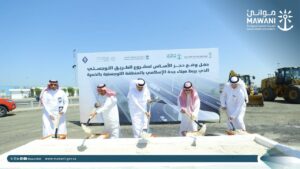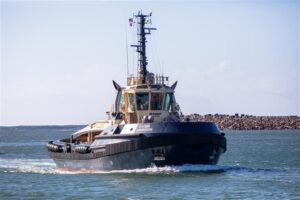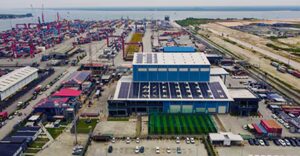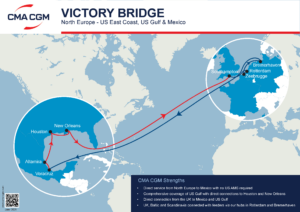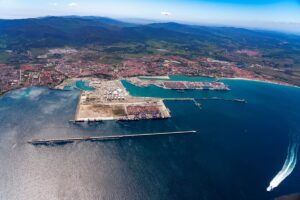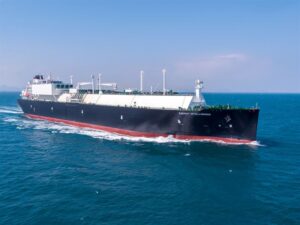The need for sustainability in the industry is an ever-growing presence and has not slowed down despite the pandemic. With smart technologies available, ports are readily trying to improve their energy efficiency and reduce carbon emissions.
PTI spoke to Ajay Bharadwaj, Senior Director, Product Management at Navis about the company’s solutions and how Navis can accommodate ports and terminals with their increasing desire to become more sustainable.
“While the primary focus for sustainability in the industry has always been on the equipment and energy efficiency through minimising unnecessary moves and reductions of fuel, the modern port now focuses on how we can move cargo in fewer moves to reduce fuel usage,” explained Bharadwaj.
Cloud-Based TOS
The need to become more energy efficient and climate neutral operations has brought about a large demand for solutions such as cloud-based terminal operating systems (TOS). Navis is already encouraging its customers to move to the cloud through the N4 SaaS solution, which can assist terminals by streamlining day-to-day operations and through this achieve their ESG goals.
“TOS in the cloud enables ports to move equipment in a streamlined way to avoid more moves and longer journeys. This allows operators to move more cargo in less time while also minimising the number of moves that take place.
One further benefit is that the system can collect operational data over time and be used to improve performance in the future.
“The data informs sustainable business decisions that will be made to optimise operations while minimising the impact on the planet. With the data collected, allocation of equipment and workers can be reconfigured in a way that lowers the impact on the planet.”
Overall, the main aim from Navis is to focus on solutions that will reduce greenhouse emissions, something which is especially needed in Europe as they aim to become climate natural by 2050.
By adapting to this type of cloud-operated system, it will bring about a reduction in on-premises hardware footprint, truck wait times at the gate, vessel wait times and rehandles while also optimising driving distances.
Big Data
Working with AI/ML technologies can be very beneficial to ports for voyage optimisation through fuel efficiency, maximising crew performance, improving voyage costs estimates, calculating optimal routes and giving recommendations on speed and course. Big data will go on to inform these emerging technologies.
“Big data allows terminals to have a dataset which can be worked on in tandem with AI/ML technologies that result in providing powerful insights to help make better decisions at the terminal.”
Such decisions that could be assisted with these systems include:
- Should I reduce the speed of the vessel?
- Where should vessels be docked to reduce time to load/unload and reduce driving distances in the yard?
- Where should vessels be docked to reduce time to load/unload and reduce driving distances in the yard?
- Based on data crane operations, when should truck arrivals be scheduled at the gate?
- Which equipment should be utilised based on maintenance windows in the future?
- Which equipment should be used to optimise distance between yard jobs to reduce fuel consumption and emissions?
Internet of Things (IOT)
The main benefit of IOT is the connectivity it enhances, allowing supply chains to be more transparent, despite supply chains typically expanding due to a rise in the number of partners. Also, with the added use of hardware such as sensors, cargo can be traced if necessary.
“IOT provides granular real-time and historical data from inputs such as sensors, hardware and equipment that can help make informed decisions to optimise operations and reduce emissions,” Bharadwaj commented.
“The more data available, the better. An abundance of numbers to reference when making decisions that impact sustainable decision-making. Data science (AI/ML) layers on top of data for continuous learning allows terminals to tap into digital twin-technology to simulate operations, resulting in better decision making.”
Thoughts for the Future
These are, of course, just some of the methods available to help achieve the overall aim of decarbonisation. In his closing remarks, Bharadwaj recommends that in order for ports and terminals to achieve their sustainability goals, they must properly define their KPIs: for example, how much fuel should be consumed within a certain time period?
Finally, Bharadwaj called on the increased adoption use of AI/ML technologies for smarter informed decisions.
“Operations can leverage digital twin-technology to create simulations to aid in making better predictions and thus better decisions with less of an impact on the environment,” he said.
“Ports and terminals should be open to data exchange and data sharing for greater visibility and control with other participants in the maritime and inland cargo supply chain.
“There is a lot we can learn from this information, and it should be shared so that we can work together to find solutions that support the supply chain without harming the planet and it resources.”
Cloud-based technologies improve the terminal operating systems greatly, allowing for a more streamlined management and the ability to reduce their on-premises hardware and data center footprints and to improve real time data exchange.


